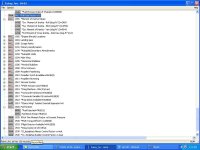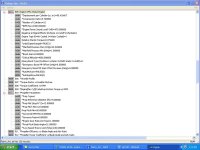Blood_Hawk23
Charter Member
First thing I see in the CFG is your entries need to be looked at. after the "=" you have spaces for some and no spaces for others. not sure if this matters but it might. I'm going to run them through a couple of programs and get some data. I'll post the pics provided I don't have any issues with my programs.
In the airfile is entry 509 needed? it refers to a turboprop.
1520- fuel injected?
turbo is still on in the airfile...
double check your fuel tanks for both air and cfg... they don't match


Thats just looking at it. not sure if any of it is the culprit or not.
In the airfile is entry 509 needed? it refers to a turboprop.
1520- fuel injected?
turbo is still on in the airfile...
double check your fuel tanks for both air and cfg... they don't match


Thats just looking at it. not sure if any of it is the culprit or not.
Last edited:

